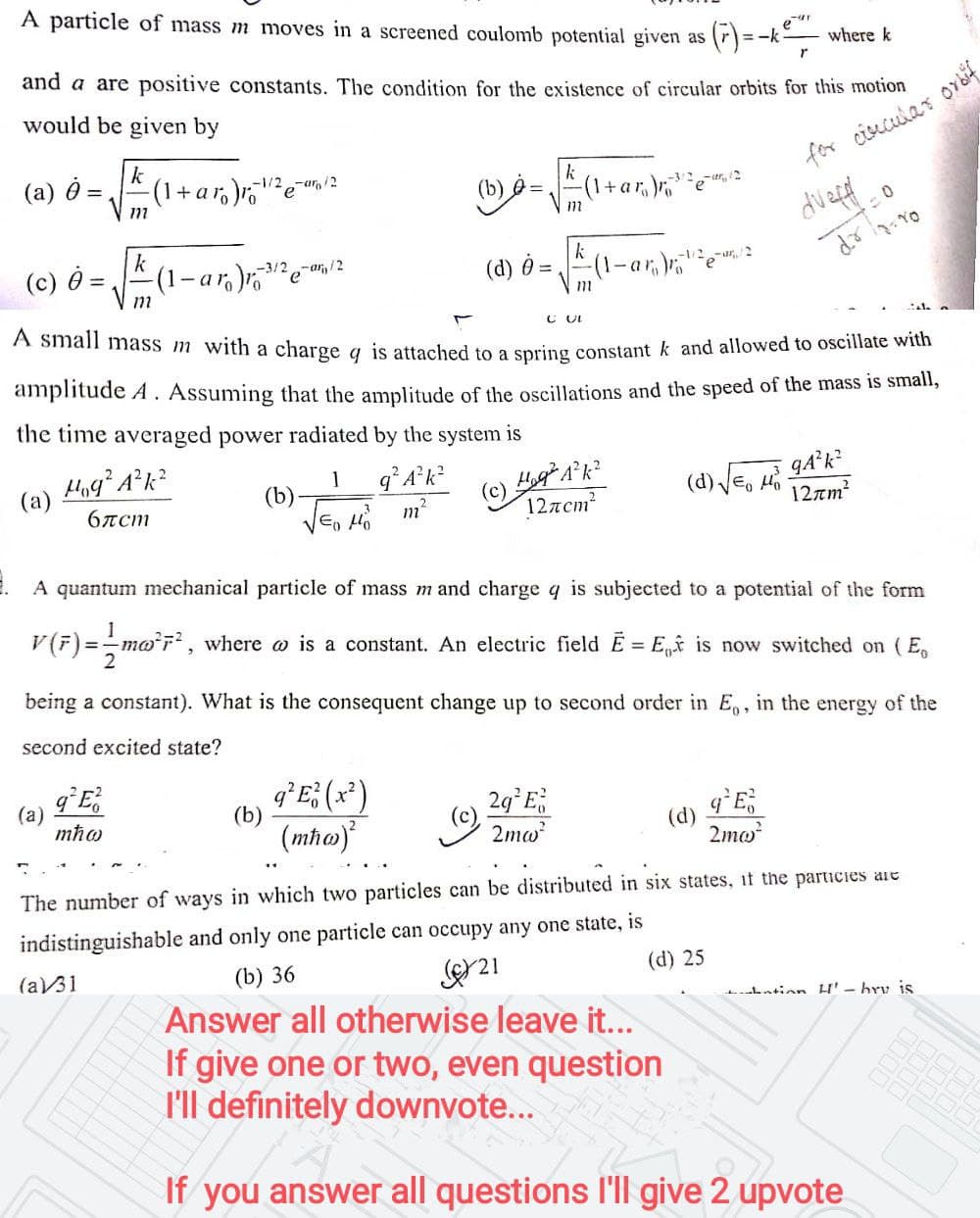A particle of mass m moves in a screened coulomb potential given as (r)=-k where k and a are positive constants. The condition for the existence of circular orbits for this motion %3D r would be given by (a) = k (1+ar,)r²e -1/2-ar/2 for cisecular oY (b) ở =(1+ar, )r," e -3'2 k (c) : -(1-ar,)r,² -3/2-a/2 %3D (d) =, (1-ar,)e
A particle of mass m moves in a screened coulomb potential given as (r)=-k where k and a are positive constants. The condition for the existence of circular orbits for this motion %3D r would be given by (a) = k (1+ar,)r²e -1/2-ar/2 for cisecular oY (b) ở =(1+ar, )r," e -3'2 k (c) : -(1-ar,)r,² -3/2-a/2 %3D (d) =, (1-ar,)e
Related questions
Question
I need the answer quickly

Transcribed Image Text:A small mass m with a charge q is attached to a spring constant k and allowed to oscillate with
A particle of mass m moves in a screened coulomb potential given as
(F) =
eur
=-k
where k
and a are positive constants. The condition for the existence of circular orbits for this motion
would be given by
k
(1+aro)o
(a) =
for cisucular
-1/2-an/2
(b) e =
(1+ar,)re
k
(c) =,
(1-ar,)
-3/2-ar,/2
-1/2
(d) =
amplitude A. Assuming that the amplitude of the oscillations and the speed of the mass is small,
the time averaged power radiated by the system is
q A*k
1
(b)
E, Ho
(d) Je, Ho
(a)
6rcm
m
12лст?
12rm?
A quantum mechanical particle of mass mand charge q is subjected to a potential of the form
V(F)=-mo'r, where o is a constant. An electric field E = E,f is now switched on (E,
being a constant). What is the consequent change up to second order in E,, in the energy of the
second excited state?
(a)
mħo
q*E; (x*)
29°E,
(b)
(mho)
(e)
2mw
(d)
2mo?
The number of ways in which two particles can be distributed in six states, if the parucies are
indistinguishable and only one particle can occupy any one state, is
(a31
(b) 36
(d) 25
Lntinn H' - bry is
Answer all otherwise leave it...
If give one or two, even question
l'll definitely downvote...
If you answer all questions l'll give 2 upvote
Expert Solution
This question has been solved!
Explore an expertly crafted, step-by-step solution for a thorough understanding of key concepts.
Step by step
Solved in 3 steps
